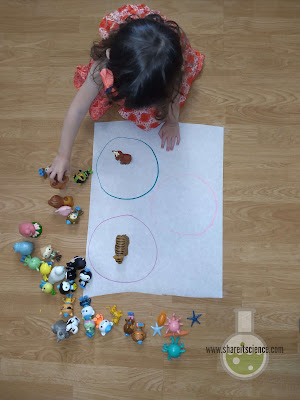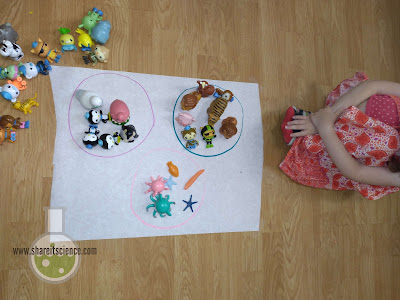Kids love animals and have an innate desire want to categorize and sort things into groups. Why not combine these passions to build early observation skills in science? I was fortunate to be given the opportunity to review this year's Compare and Contrast books from Arbordale Publishing. I'd love to share this engaging book series with you along with resources and activity ideas for science class.
In this post you will find information about Compare and Contrast books, written by seasoned zoo and aquarium educators, as well as links to an infographic activity and how to use graphic organizers to build science skills in observation and categorization.
This post contains affiliate links, meaning I receive a commission
from purchases made through links, at no additional cost to you.
Please see
disclosures for more information.
Animal Compare and Contrast Books
The newest compare and contrast books from Arbordale Publishing feature dazzling photos of animals. In many cases the pictures give a glimpse of something we would not have an opportunity to see otherwise. We especially loved the images of turtles in Turtles: A Compare and Contrast Book. You can preview the turtle book here. (Recommended for ages 4-9, grades K-3)
Each book in the series is well organized. For example, Birds: A Compare and Contrast Book is organized by feature and adaptation. I think this makes this series perfect for the classroom or at home because students can find interesting information in a way that is logical and scaffolds off of their prior knowledge. You can preview the bird book here. (Recommended for ages 4-9, grades K-3)
While the turtle and bird books focus on one group of animals, others compare and contrast two similar yet different types of animal. These are wonderful for finding out why we may confuse two types of creatures and what actually makes them different from one another. These titles include: Alligator or Crocodile?, Black Bear or Grizzly Bear?, Hippo or Rhino? and Octopus or Squid?.
We definitely learned some interesting things we didn't know before from this book series.
Did you know?
- There are 16 subspecies of Black Bear in North America. All subtle differences in DNA.
- In addition to eight arms, squid have two tentacles covered in suction cups and hooks.
- Black rhinos can grab onto things with their prehensile upper lip.
And many, many more interesting facts, but I don't want to spoil them all!
I loved that each book contained additional learning material, activities and ideas in the back. You could read the book just for fun, or turn it into a deeper learning experience with these extensions.
I believe the Compare and Contrast series would be an excellent addition to any classroom or home library. Engaging images, interesting and understandable content on topics kids get excited about.
Comparing and Contrasting for Preschool
Little ones love to sort! After a Compare and Contrast book read-aloud, get out a big sheet of paper (we love big paper rolls!) tape it to the floor and draw some sorting circles. Grab some animal toys (our Octonauts made it into the mix!) and have the kids sort based on color, type or however they choose.
This is excellent practice in making observations, looking carefully, comparing and contrasting.
Create an Infographic with Elementary Students
Use the Compare and Contrast series to have students design their own infographics. Using this template, kids can illustrate and write about an animal they have read about. Bits of information comparing their animal to another are explained with text and information. Once everyone is done the students can become the teachers and share their illustrated information with their peers.
Grab the infographic template worksheet here.
Graphic Organizers
Here is a great article on using graphic organizers in literature-based science instruction. After reading a compare and contrast book help students organize and process new information by using a graphic organizer such as a T-chart or Venn diagram.
T-charts are an easy way for young students to organize information when comparing two things. Circle the kids up and get out the chart paper to have them help you populate information into two categories.
If you're looking for another book to inspire some STEM learning in the elementary classroom, check out my post: Poetry and Engineering Inspired by Nature.




